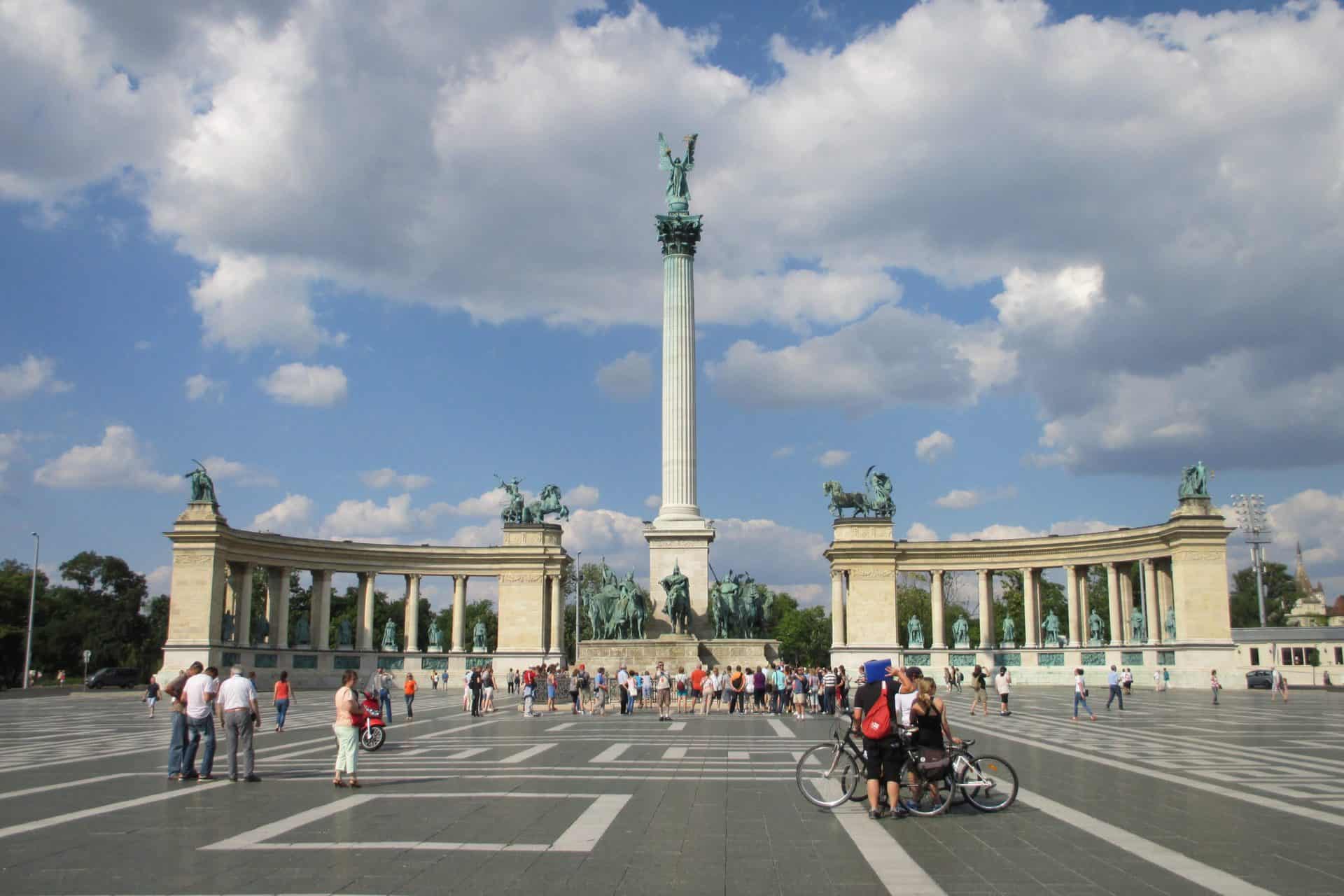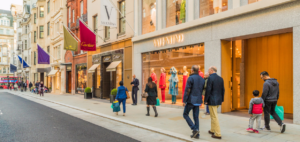Heroes’ Square Budapest, Hungary

Updated On: February 23, 2024 by Ahmed Samir
Heroes’ Square, known as “Hősök tere” in Hungarian, is one of Budapest’s most iconic and historically significant landmarks. Situated at the end of Andrássy Avenue, this exquisite Square is a tribute to Hungary’s rich history and heritage. The Square’s grand architecture, magnificent statues, and symbolic significance make it a must-visit destination for tourists and a source of national pride for Hungarians. This article will explore the history, architecture, symbolism, and cultural importance of Heroes’ Square in Budapest, Hungary.
History of Heroes’ Square
Heroes’ Square‘s history is intertwined with Hungary’s national identity and quest for independence. Its development can be traced back to the late 19th century when Hungary, after centuries of foreign rule, began asserting its identity and autonomy within the Austro-Hungarian Empire.
Architect Albert Schickedanz and sculptor György Zala primarily oversaw the Square’s design and construction. Work on the Square began in 1896, commemorating the 1,000th anniversary of Hungary’s conquest of the Carpathian Basin by the Magyar tribes. The Millennium Monument, which stands at the centre of the Square, was the project’s focal point, celebrating Hungary’s history and independence.
Architecture of Heroes’ Square
Heroes’ Square is characterized by its grand neoclassical and eclectic architectural style. The central feature of the Square is the Millennium Monument, an imposing column with statues and allegorical figures that celebrate Hungary’s history. The column stands 36 meters (118 feet) tall and is topped with the Archangel Gabriel holding the Hungarian Holy Crown and the apostolic double cross.
Surrounding the column are two semicircular colonnades, each with seven statues of important historical figures. These statues represent kings, governors, and military leaders who played pivotal roles in Hungary’s history. Among the notable figures depicted are King Stephen I, Matthias Corvinus, and Lajos Kossuth.
Flanking the Square are two important cultural institutions: the Museum of Fine Arts on the left and the Palace of Art on the right. These magnificent buildings complement the Square’s grandeur and provide a cultural backdrop to the historical and artistic significance of the square.
Symbolism of Heroes’ Square
Heroes’ Square is a powerful symbol of Hungary’s national identity and history. The central monument, the Millennium Monument, represents the unity of the Hungarian people and their thousand-year history. The Archangel Gabriel atop the column symbolizes the nation’s guardian spirit, while the Holy Crown and the apostolic double cross signify Hungary’s historical connection to Christianity.
The statues in the semicircular colonnades represent various historical figures who contributed to Hungary’s development and freedom. These statues are not just memorials but serve as reminders of Hungary’s resilience and the sacrifices made by its heroes.
The overall design of the square, with the arcades embracing the central monument, is reminiscent of the shape of a horseshoe. This design is aesthetically pleasing and carries historical significance, as horseshoes were believed to bring good luck and protect against evil spirits in Hungarian folklore.
Cultural Importance
Heroes’ Square is more than just a historical monument; it is a gathering place for cultural and civic events. The square hosts festivals, concerts, and public gatherings throughout the year that celebrate Hungarian culture and heritage. One of the most significant events at the square is the August 20th celebrations, which mark Hungary’s founding and its first Christian king, Stephen I.
The square also plays a vital role in national commemorations and ceremonies. It is often the site of official events and gatherings, including state funerals and the inauguration of Hungary’s presidents. It is where Hungarians come together to remember their history and honour their heroes.
Exploring the Treasures Around Heroes’ Square
Heroes’ Square in Budapest is a stunning attraction and a gateway to several other noteworthy sites and attractions in the city. Visitors can explore the surrounding area and discover diverse cultural, historical, and recreational places. Here are some of the attractions located near Heroes’ Square:
- Vajdahunyad Castle: Located in City Park (Varosliget), right behind Heroes’ Square, Vajdahunyad Castle is a picturesque castle complex that resembles a fairytale fortress. It houses the Museum of Hungarian Agriculture and features various architectural styles, including Romanesque, Gothic, Renaissance, and Baroque. The castle is enchanting during winter when it hosts an ice-skating rink in its courtyard.
- Széchenyi Thermal Bath: Adjacent to Heroes’ Square, Széchenyi Thermal Bath is one of Budapest’s most famous thermal baths. It offers a rejuvenating experience in its thermal pools, saunas, and steam rooms. The stunning Neo-Baroque architecture of the bathhouse itself is a sight to behold.
- Budapest Zoo: Also situated in City Park, Budapest Zoo is one of the oldest zoos in Europe. It features various animals, botanical gardens, and educational exhibits. It’s an excellent place for families and animal enthusiasts to explore.
- Museum of Fine Arts: Located to the left of the square, the Museum of Fine Arts houses an extensive collection of European art, including works by renowned artists such as Rembrandt, Titian, and Dürer. The museum’s neoclassical facade and grand interior make it an attraction in its own right.
- Palace of Art (Műcsarnok): Situated to the right of Heroes’ Square, the Palace of Art is an exhibition hall and cultural centre hosting contemporary art exhibitions, concerts, and other cultural events. It’s a dynamic place to explore modern Hungarian and international art.
- Olof Palme House: This modern cultural centre is dedicated to contemporary arts, including exhibitions, concerts, and theatre performances. It often showcases innovative and experimental works of art.
- City Park Ice Rink: Adjacent to Heroes’ Square, this ice-skating rink is Europe’s largest outdoor rink. In the winter, it transforms into a winter wonderland, offering ice skating under the beautiful backdrop of Vajdahunyad Castle.
- Transport Museum: If you’re interested in transportation history, the Hungarian Museum of Transport is located in City Park, a short walk from Heroes’ Square. It displays a fascinating collection of vehicles and artefacts about Hungary’s transportation history.
- Andrássy Avenue: This grand boulevard begins at Heroes’ Square and extends towards the city centre. It’s lined with beautiful historic buildings, luxury boutiques, and cafes. Andrássy Avenue is a UNESCO World Heritage site that offers a pleasant stroll along the way with architectural gems.
- House of Terror: A short walk or tram ride from Heroes’ Square, the House of Terror is a museum dedicated to the dark periods of Hungary’s history, including the Nazi and Communist regimes. It provides a sobering look at the country’s past and the resilience of its people.
These attractions, all conveniently located near Heroes’ Square, offer a wide range of experiences for visitors to explore, from history and culture to relaxation and entertainment. Whether you’re interested in art, architecture, or outdoor activities, the area around Heroes’ Square has something to offer every traveller.
Visiting Heroes’ Square
Heroes’ Square is easily accessible and well-connected to Budapest‘s public transportation system. Visitors can take the metro (M1 line) to Heroes’ Square station next to the Square. The Square is open year-round to the public, with no admission fee.
When exploring Heroes’ Square, it is recommended to start at the Millennium Monument and work your way around the semicircular colonnades. Each statue has a plaque with information about the historical figure it represents, providing visitors with insights into Hungary’s history.
Conclusion
Heroes’ Square is more than just a landmark; it symbolises Hungary’s enduring spirit and a tribute to the heroes who shaped its history. The Square’s stunning architecture, rich symbolism, and cultural significance testify to the nation’s identity and aspirations.
A visit to Heroes’ Square in Budapest is a journey through Hungary’s past, a celebration of its present, and a recognition of its future. Whether you are a history enthusiast, an art lover, or a traveller seeking to understand a country’s heritage, Heroes’ Square offers an immersive experience that will leave a lasting impression. It is a place where the past is celebrated, the present is embraced, and the future is shaped, making it a must-see destination in the heart of Hungary’s capital.
FAQs
What is the historical significance of Heroes’ Square in Budapest?
Heroes’ Square is a symbol of Hungary’s national identity and history. It commemorates the 1,000th anniversary of Hungary’s conquest of the Carpathian Basin by the Magyar tribes and celebrates the nation’s heroes who played pivotal roles in its history.
Are there any special events or celebrations held at Heroes’ Square?
Yes, Heroes’ Square hosts various events and celebrations throughout the year, including the August 20th celebrations, concerts, festivals, and national commemorations. It’s a vibrant place for cultural gatherings.
What is the history of Vajdahunyad Castle, and how close is it to Heroes’ Square?
Vajdahunyad Castle is a charming castle complex behind Heroes’ Square in City Park. It was constructed to showcase various architectural styles and is a popular attraction in Budapest.
Can you recommend any family-friendly activities near Heroes’ Square?
Absolutely! The nearby Budapest Zoo in City Park is a great family-friendly attraction. It offers a chance to see various animals and enjoy a day outdoors. The City Park Ice Rink is also a fun activity for families, especially during winter.
Are there any guided tours available for Heroes’ Square and its surroundings?
Guided tours are often available for Heroes’ Square and neighbouring attractions. These tours provide historical insights and interesting facts about the area. You can inquire at the tourist information centres in Budapest for current tour options and schedules.






